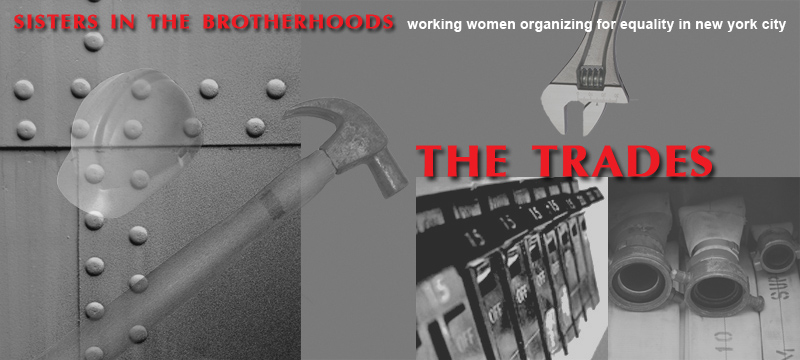 |
||||||
Ironworker: "Learning to Labor on High Steel" Ironworkers perform two types of tasks: structural, in which the skeleton of a building is created with steel beams, and ornamental, the finishing jobs that are done at a later stage of construction. In New York City, ironworkers ply their trade far above the city’s streets, walking high steel beams with grace and daring. These skilled tradespeople belong to the International Association of Bridge, Structural, Ornamenta, and Reinforcing Ironworkers. Unlike most of the country, New York City has a separate local for ornamental ironworkers—Local 580, which includes the city's five boroughs and the counties of Westchester, Suffolk, and Nassau. Janine Blackwelder was a member of Local 580 for 12 years, all of them during the local's protracted struggle with the federal government over charges of discriminatory practices and racketeering. Looking for work is the central fact of life for most construction workers. Jobs end eventually, and then the search for the next opportunity begins. Two systems govern the search for employment: the industry’s formal rules and the informal connections that work to the disadvantage of people considered “outsiders”—particularly women and minority men. The actual experience of trying to get hired onto a construction project remains a world apart from the laws and regulations that are on the books. Members of Local 580 had the right to solicit their own work—in effect acting as free agents—through a network consisting of the union, employers, foremen, relatives, and friends. Kinship and cronyism are powerful factors that influence hiring. In 1971 the U.S. Department of Justice filed a complaint (Equal Opportunity Commission vs. Local 580) charging that Local 580 and its apprenticeship program violated the Civil Rights Act of 1964. Under a consent judgment effective July 21, 1978, Local 580 was required to take specified steps to remedy the problems. The local also was under court supervision. Between 1978 and 1991 Local 580 resisted compliance through various maneuvers, spent time and money in and out of the courts, with no resolution. In June 1991 another court proceeding resulted in an agreement on a new hiring formula and the establishment of a new referral system. That ruling also was ineffectual. According to a 1993 report issued by the New York City Commission on Human Rights, 1.1 percent of Local 580’s members were women. Although the local's official count of minority members increased over time, many of these individuals received so few referrals that they did not work the 1,000 hours necessary to receive annual health insurance benefits, according to Herman Benson in the January 1997 Union Democracy Review. During this period another aspect of Local 580’s history attracted public scrutiny and court action. From 1978 to 1990 four of New York City’s five crime families created a cartel of window-replacement companies that dominated the industry's public sector. While Local 580 controlled the supply of the window-replacement workers, the Lucchese crime family controlled Local 580, as documented by James B. Jacobs in Gotham Unbound: How New York City was Liberated from the Grip of Organized Crime. Two Local 580 officials were murdered during this period, including John Morrissey, a defendant in a high-profile federal lawsuit known as “the windows case.” Morrissey, a member of the Lucchese crime family, was killed before the trial began. Frank Leone, Janine Blackwelder’s B.A. (business agent), was slain in front of his home. Subsequent racketeering trials revealed that payoffs—$1 to $2 per window imposed on many window-replacement contracts in New York City—benefited “corrupt union officials, Housing Authority officials, and Cosa Nostra bosses” (Jacobs, Gotham Unbound). The struggle between the EEOC and Local 580 continues into the 21s century. In 2001 the federal government filed a contempt action against the local for violating both Title VII of the 1964 Civil Rights Act and previous court orders. A partial settlement was reached in 2007. | ||||||
| ||||||
| Copyright 2012 Jane LaTour/Talking History |
||||||